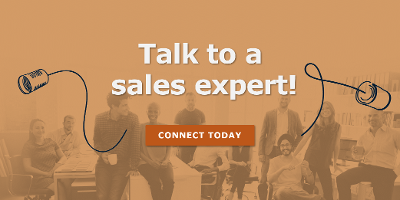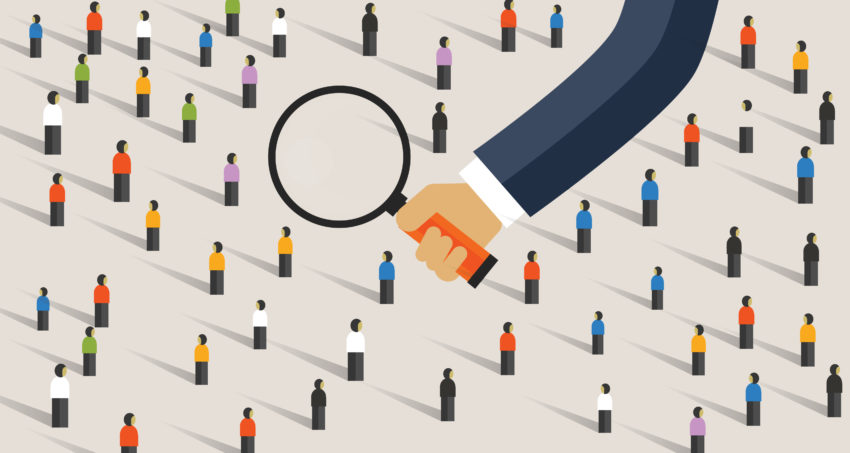One of 2021's Top HR Must Dos—DEI
We have seen our share of hate, cruelty and intolerance. We can do better. March 1st-7th is annual Universal Human Beings Week. The week celebrates humanity and reminds us we should be considerate towards other fellow humans. It is a time to reflect on how we treat other people, and do what we can in the fight for equality.
We have known for decades that diversity and inclusion in the workplace are important. However, there has been a significant lack of understanding and quantitative evidence to prove diversity programs' effectiveness.
of employees are expecting their employers
to become more culturally active.
The government first attempted to create equality during the Civil Rights era with the Civil Rights Act of 1964 and the Equal Pay Act of 1963. Their efforts continued through more recent legal changes like Affirmative action, which put policies in place to force the corporate world's hand. Though well-intended, as companies began filling "quotas" with unqualified candidates, discrimination increased.
Many companies made a half-hearted attempt to meet diversity compliance standards by implementing diversity and inclusion programs. However, neglecting to see the potential positive impact these programs could have on the company meant the plans were rarely adequately implemented.
It isn't just poor implementation that has led to the failure to diversify the workplace. People's overall lack of understanding regarding what diversity means or what an inclusive work environment even looks like has dramatically hindered the success of "meant-well" diversity programs.
Defining Diversity & Inclusion
Diversity means "to be a range of different things."
In America, diversity represents unique qualities in its people such as their age, ethnicity, religion or sexual orientation. When you extend diversity into the workplace, it takes on a different meaning. It is no longer just a range of different things but instead the creation of a culture that welcomes, celebrates and appreciates diverse people. It is an expectation that the workplace will allow for the exploration and differences of people in a safe, positive, and nurturing environment and that people will understand each other rather than just tolerate one another.
Inclusion is an organized effort that makes individuals feel included, welcomed and equally treated. It is creating a supportive environment that provides a sense of belonging for everyone. This allows all employees to contribute and feel like a valued part of the team. Happy employees lead to happy, more productive workers who feel bonded to the company.
The Power of Diversity & Inclusion
When companies began hiring a more diverse workforce, they still lacked the knowledge to manage diversity. There are two significant problems a company faced.
- The "revolving door" syndrome where underrepresented employees quit shortly
after being hired. - Employees failed to collaborate, trust or accept one another.
To address this problem, companies would implement new systems, procedures, and training to encourage underrepresented employees. It isn't until the last three years, or so that leadership began to realize the numerous tangible and intangible benefits that a diversity program can create.
Programs are good for employee morale, but more than that, they can elevate the business as a whole. Employing and celebrating people who may have been previously disregarded due to their differences greatly impact a company's brand reputation.
The Four Stages of Progress
Every firm in corporate America falls with one of the four categories.
- EEO and Legal Compliance – The main focus is complying with legal mandates and reporting to the Equal Employment Opportunity Commission (EEOC). Many businesses have moved past just checking the compliance box, but many consider this their diversity and inclusion program.
- Affirmative Action and Hiring of Diversity Officers – This stage brings serious conversation about diversity to the table. Companies begin to devote money to support the minority workforce through scholarships and internships. The potential pitfalls in this stage result from strategic thinking in its application.
- Targeted Diversity and Inclusion Recruitment and Retention – This is an important and pivotal part of creating a program that is not only inclusive but fair. It also serves as accountability for the company.
- Incorporating Diversity and Inclusion into the Corporate Business Model – Company's diversity and inclusion programs begin to develop an entity of its own, with every company having its cultural environment. The first three stages have set the stage for showing how important the programs are to inclusiveness. The company now has the potential to become global leaders in Diversity and Inclusion.

Building a Diversity & Inclusion Program for Your Business
It is important to note that a diversity program is not a one size fits all plan that is easily replicated and takes minimal maintenance. Diversity is an intricate part of a company's business model.
Four parts should be implemented. Each is meant to be a building block that can be shaped to fit each business's culture, ethics and office dynamics.
1. Work from the top down – If employees are to take a diversity program seriously, it must start at the CEO level. Messaging should extend to middle management along with responsibilities that hold them accountable, and they should practice role modeling as part of the effort. Doing so will change the view throughout the company and create a positive environment.
2. Link inclusion and diversity to growth strategy – For the program to be valuable, it must become strategically important for the company. Tailoring your approach to diversity and inclusion should be done based on the results of internal research. Company's need to understand the company culture and reconcile it with their goals for the future. This customized approach will lead to a more sustainable and well-received program.
3. Craft and initial portfolio – Now that there is an understanding of the employees and the program's goal, the company can create various initiatives that will support it. It will also be able to decide which dynamic will resonate best with the company's stakeholders.
4. Tailor for impact - The diversity and inclusion program should be tailored to each department, so the business can create a welcoming and inclusive environment in which employees feel like they belong,
For any Diversity and Inclusion Program to be successful, the company must commit to continuous improvement. Diversity is a journey, not a destination. It will take patience, time and perseverance.
Some workers may not be tolerant of coworkers who don't yet appreciate the value of diversity. Be willing to educate and communicate rather than penalize. Welcome new ideas and support fellow teammates.
Companies that value diversity and inclusion have happier employees and less turnover. They bring in more sales revenue, more clients, and have higher profits. Diversity works for everyone.
Now more than ever, your employees need emotional support and resources. The pandemic has created a whole new set of physical, financial and emotional stressors that have woven their way into the home and workplace.
Hundreds of organizations support their employees through The Ulliance Life Advisor Employee Assistance Program (EAP). Investing in the right EAP to support your employees before, during and after they face adverse events will help them and help you. Visit ulliance.com, or call 866-648-8326.
References
lEONE, M. (2020). Diversity and Inclusion in the Workplace; Benefits, Challenges and Strategies for Success. Clark Digital Commons. Retrieved from https://core.ac.uk/display/323908705?recSetID=
Ly, S. (2020). The True Value of Bringing Diveristy, Equity, and Inclusion Into YOur Worplace. Retrieved from 15Five Blog: https://www.15five.com/blog/diversity-equity-and-inclusion/?
_bt=487547106892&_bk=&_bm=b&_bn=g&_bg=116141573918&campaignid=11853637906&adgroupid=116141573918&adid=487547106892&gclid=Cj0KCQiAj9iBBhCJARIsAE9qRtDxedand3J1Oh_VhbG1Y_z_ThpHxMEfDNSb4dxbTvv2SnWPGD
Pedrelli, R. (2014, September 9). 10 Ways Employees can Support Diversity and Inclusion. Retrieved from Profiles in Diversity Jurnal: https://diversityjournal.com/14154-10-ways-employees-can-support-diversity-inclusion/


